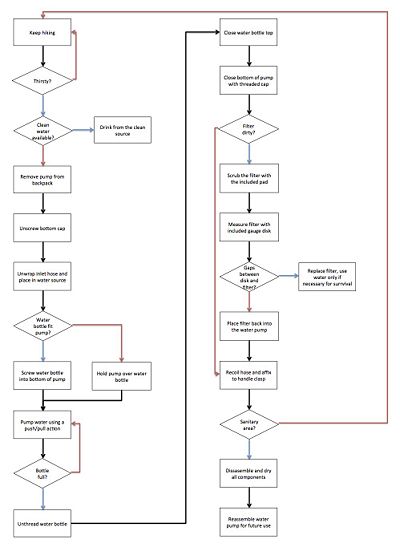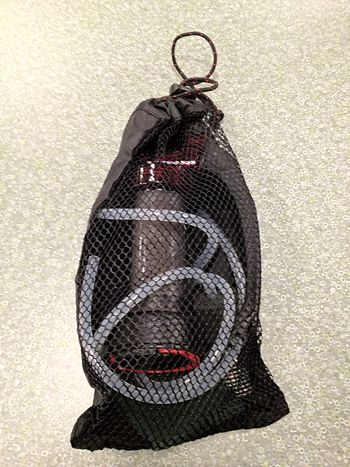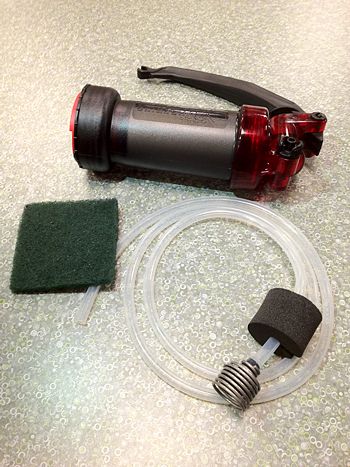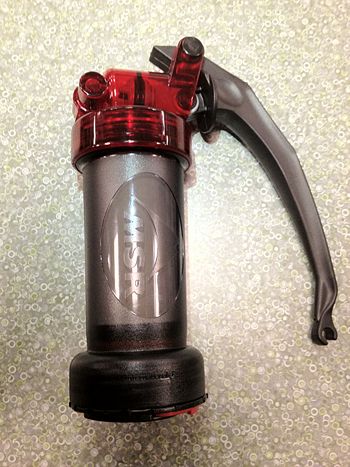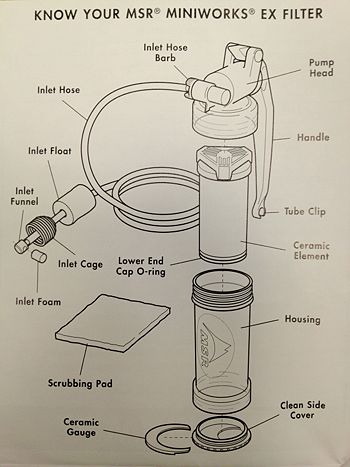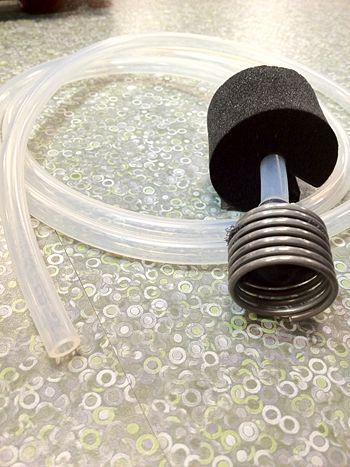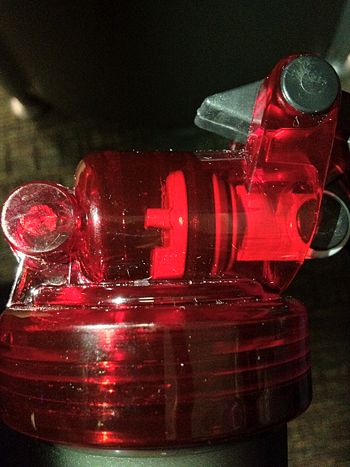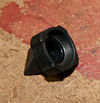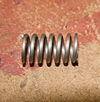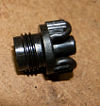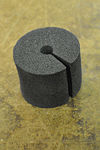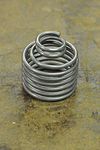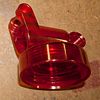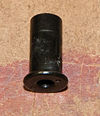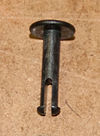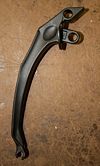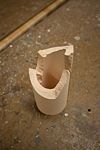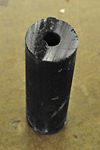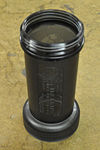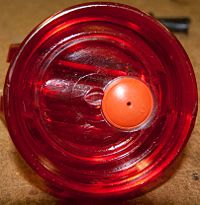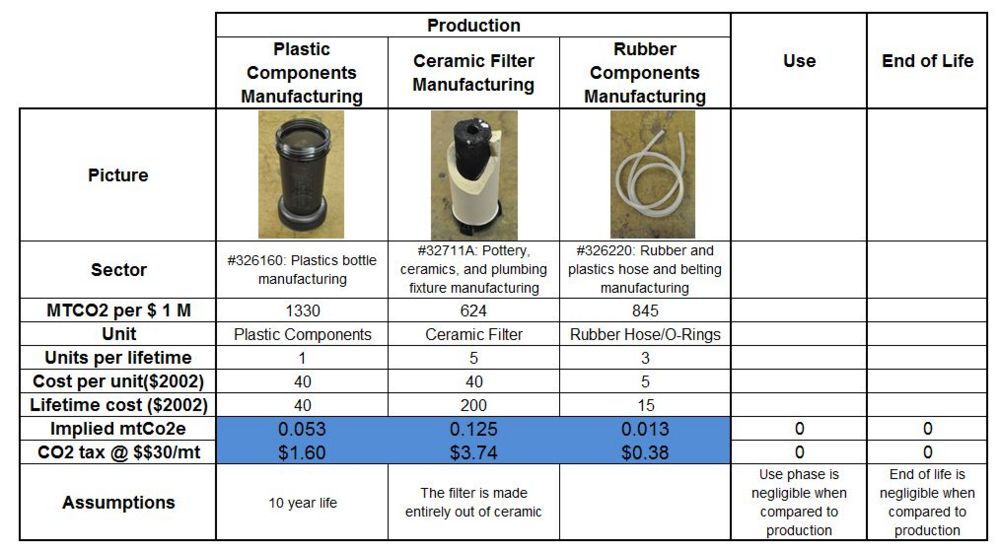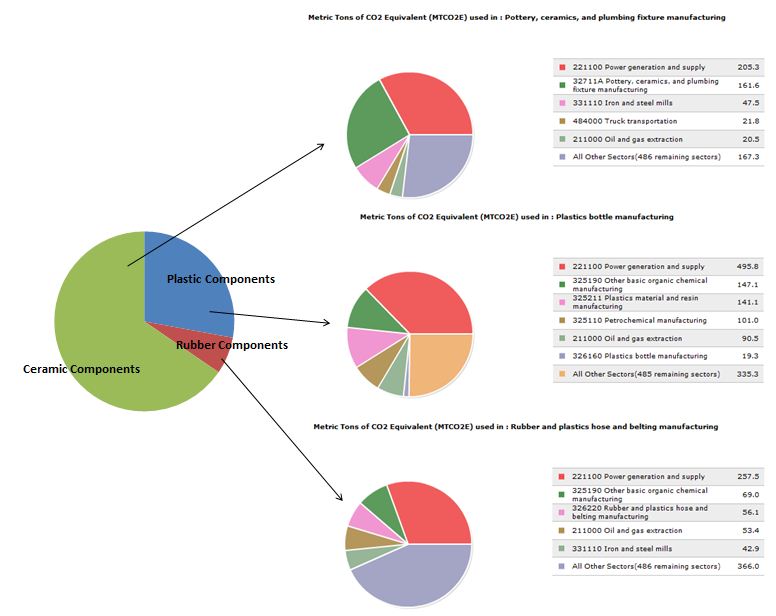Water filtration pump
From DDL Wiki
Contents |
Primary Stakeholders and Product Needs
The primary stakeholders and their needs for the product are listed below. The stakeholders are parties that have an vested interest in the product. Consumers, retailers, manufacturers, and shipping/transport were identified as the most important stakeholders in the product.
Consumers:
The consumers are the group of people that purchase and use the product, and therefore have a major interest in the product. As the product is a portable water filter, major target consumer groups are backpackers, and people without easy access to clean water.
- One of the most important functions of the water pump is that it pumps water. Without the ability to pump water, it can't push water through the filter, and thus can't filter water.
- Another important aspect is the drinkability of the water. The pump will need to eliminate dangerous pathogens and bacteria, or else the user of the product could get potentially life-threatening diseases. In addition, since the pump is meant to be used as a backpacking filter, medical first aid may not be readily available.
- The portability of the water pump is important as well, as it is meant to be a backpacking water pump. It needs to be carried, and so having a light product that can fit into a backpack is essential to the consumer.
- In order for the product to compete with similar products on the market, it must pump water quickly and efficiently. The pump can't be too hard to operate.
- The pump must also be cheap in order to be competitive with similar products.
- As the pump is meant to be taken backpacking, the pump must be durable. It should be able to sustain loads that could result from being thrown into a backpack. As having a source of water is vital, the pump breaking in the middle of a backpacking trip could not only be inconvenient but dangerous to the consumer.
- Product lifetime and filter lifetime are both important factors in a consumers decision as well. The longer lasting the product and the filter, the less hassle and cost it is for the consumer.
- Using sustainable materials for the water filter is important as well. The target consumers generally spend a lot of time in nature and appreciate the importance of using sustainable materials and processes in creating the product
- Since the water filter could be contaminated and needs to be cleaned regularly, the ease of cleaning and sterilization of the water pump is very important.
- The product must also be safe, as there are moving parts, and could be a potential cause of injury.
- Finally, the product should work with existing products such as Nalgene and CamelBaks, as many backpackers already have these products, and would prefer to choose a product that works with equipment that they already own.
Retailers:
The retailers are another group that has a major interest in the product. The retailers sell the product to the customer, in exchange for profit. The target retailers include outdoor equipment and sports stores such as REI and Dicks, as well as internet vendors such as Amazon.
- The price of the product is very important to retailers, as it affects their profit margin, and the quantity of product they can sell.
- The sustainability is important to many retailers, especially for retailers that have sustainability as part of their brand image.
- An attractive product will stand out to consumers more, and will contribute to sales. This is important especially in comparison to similar products.
- As the bottom line of the retailer is profit, the profitability of the product is very important to the retailer. Even if a product sells well, if the profitability is low, the retailer will not see a lot of profit, and will not want to carry the product.
- Safety is an important factor to the retailer, as the retailer will be partly responsible for any injuries from products it carries.
Manufacturers:
Manufacturing is an important stakeholder, as it is responsible for the creation of the product. The effects of manufacturing can be felt downstream by the retailers and consumers as well.
- The manufacturing of a product represents the majority of the cost of the product. Therefore, keeping manufacturing costs low will in turn have a big effect on the final retail price and profitability as well.
- Having a simple design with few parts will help decrease the assembly complexity and the number of necessary processes, thereby keeping the cost low.
- The design must also be compatible with large scale manufacturing processes such as injection molding. By doing so, the cost for creating a large quantity of the product will go down.
- The ease of assembly of the product will help keep assembly costs low, and also make the product easily maintainable by the consumer as well.
- Using standardized, interchangeable parts will eliminate the need of custom parts, and simplify the manufacturing process as well as lower cost.
- All processes and parts must be safe for the worker to handle, and be in accordance to any government regulations such as OSHA.
Shipping/Transport:
As shipping and transport can constitute a significant cost, it is necessary to be cognizant of shipping and transport needs.
- The product needs to be sturdy, so it won't be easily damaged during shipping. A fragile product needs extra packaging and handling care, which will be an additional cost to the company.
- As the weight of a product has a significant effect on the gas mileage of vehicles, the weight of the product is an important factor.
- A compact product will allow more of the product to be shipped together, thereby lowering the cost of shipping.
Product Function and Evaluation
Usage
Find the cleanest possible source of water. The intake hose is unwound, and then the intake hose is inserted into the water source. Attach the pump to the water container. Pump water at a steady rate, until container is full. Pull the intake hose out of the water, and pump to clear pump of any additional water.
Mechanical Function
The product contains a lever that is attached to a pump with two check valves. On the intake stroke, the intake check valve allows water through the water source into the piston. On the compression stroke, the intake check valve is closed and the bottom check valve allows water to be forced through the filter chamber. The filtered water is then sent out of the pump.
List of Parts
The following details the list of parts of a MSR MiniWorks EX Microfilter.
| Part Number | Name | Quantity | Mass (g) | Subassembly | Function | Material | Manufacturing Process/ Purchased Component | Image |
|---|---|---|---|---|---|---|---|---|
| 101 | Duckbill Valve | 1 | 0.5 | Hose Barb | Plastic | Injection Molding | ||
| 102 | Washer | 1 | <1 | Hose Barb | Steel | Purchased | ||
| 103 | Spring | 1 | 2 | Hose Barb | Steel | Purchased | ||
| 104 | Hose Barb O-Ring | 1 | 0.5 | Hose Barb | Rubber | Purchased | ||
| 105 | Hose Barb | 1 | 3 | Hose Barb | Plastic | Injection Molding | ||
| 201 | Hose | 1 | 44 | Inlet Hose | Rubber | Purchased | ||
| 202 | Buoy | 1 | <1 | Inlet Hose | Foam | Foam Molding | ||
| 203 | Debris Cage | 1 | 11 | Inlet Hose | Steel | Purchased | ||
| 204 | Intake | 1 | 1 | Inlet Hose | Plastic | Injection Molding | ||
| 205 | Foam Filter | 1 | <1 | Inlet Hose | Foam | Foam Molding | ||
| 301 | Pump Housing | 1 | 56 | Piston | Plastic | Injection Molding | ||
| 302 | Piston | 1 | 9 | Piston | Plastic | Injection Molding | ||
| 303 | Piston O-Ring | 1 | 2 | Piston | Rubber | Purhcased | ||
| 304 | Piston Pivot Sleeve | 1 | 1 | Piston | Plastic | Injection Molding | ||
| 305 | Piston Pivot Pin | 1 | <1 | Piston | Plastic | Injection Molding | ||
| 306 | Handle Pivot Sleeve | 1 | 2 | Piston | Plastic | Injection Molding | ||
| 307 | Handle Pivot Pin | 1 | 1 | Piston | Plastic | Injection Molding | ||
| 308 | Handle | 1 | 49 | Piston | Plastic | Injection Molding | ||
| 309 | Piston Umbrella Valve | 1 | <1 | Piston | Rubber | Injection Molding | ||
| 401 | Top Cap | 1 | 18 | Filter | Plastic | Injection Molding | ||
| 402 | Outlet Cap | 1 | 10 | Filter | Plastic | Injection Molding | ||
| 403 | Ceramic Filter | 1 | 42 | Filter | Ceramic | Ceramic pouring and baking | ||
| 404 | Carbon Filter | 1 | 34 | Filter | Carbon | Compression Molding | ||
| 405 | Filter O-Ring | 1 | 4 | Filter | Rubber | Purchased | Pending Image | |
| 501 | Filter Body | 1 | 97 | Body | Plastic | Injection Molding | ||
| 502 | Clean Cap | 1 | 18 | Body | Plastic | Injection Molding | ||
| 503 | Filter Gauge | 1 | 5 | Body | Plastic | Injection Molding |
Design For Manufacturing and Assembly
DFM
Dissection of the MSR Miniworks water filter shows clear attention to ease of manufacture and assembly by its designers. The majority of the product’s structure is made of relatively thick walled injection molded plastic components. The pump handle, piston, pump head, filter housing and clean side cover among many other pieces are injection molded before assembly. These parts are cheap and easy to manufacture but in the case of the Miniworks, may require very complex and expensive injection molding tooling. Some examples of complex molding on the Miniworks are the pump head and filter housing, which both require unscrewing devices or finishing operations to create internal threads, and the inlet hose barb which most likely requires a side action. Despite their complexity, these tools and processes are clearly well optimized and avoid unnecessary finishing operations (visible on the inner surface of the pump head) while creating very attractive components.
Overall, the material choice and construction clearly have manufacturability in mind. There are only 3 metal parts in the entire assembly (the inlet cage, relief valve spring and duckbill washer). All other parts aside from the ceramic and carbon filter elements are plastic, rubber or foam and extremely easy to produce on a large scale or purchase from another manufacturer in the case of O-rings and washers.
DFA
Dissecting the Miniworks showed that its designers prioritized ease of assembly and disassembly by the user over assembly on the manufacturing line. A moderately experienced user is able to completely disassemble or reassemble the entire filter from individual components in a matter of minutes while causing minimal additional wear on its components. Since the components are designed for hand assembly, it is possible that more complicated assembly processes such as robotic arms or human labor are necessary for final assembly in the factory. An example of this phenomenon is present in pump head pin and piston pin. These fasteners (the only two present in the product) may be very difficult for a machine to align and insert on an assembly line and are consciously designed in such a manner to facilitate human assembly. The designers of the Miniworks also prioritized ease of assembly over component complexity, especially in the case of their injection molded components.
The designers of the Miniworks clearly believed that trading component simplicity for assembly simplicity would offset the additional initial tooling and process costs by increasing sales due to the filter’s ease of maintenance.
Design for Environment
Design for Environment, or DFE, can give us important insights on what areas to focus on in improving our design in order to reduce impact, costs, and resources that are associated with our product. To do this we conducted a full life-cycle analysis on the water filtration pump. It was determined that no greenhouse gasses were produced during the use of the pump and that the impact associated with end of life was negligible compared to the resources consumed during production. In order to get a better insight, the production of the water pump was split into plastic components, the ceramic filter, and the rubber components.
After conducting the analysis, it is evident that the ceramic filter has the largest carbon footprint. The reason for this, is that the filter has to be changed often. A clear way that we can lessen our impact and reduce the cost of the product, is to increase the life of the filter. The second largest impact in the life cycle of the product is the plastic manufacturing. This can be improved upon by making smaller and lighter plastic parts. And finally, the ceramic filters all get transported by truck to retailers and to consumers. We can improve in this area by reducing the packaging size and weight, and by using the packaging of the product as the shipping box of the product. The environmental impact of the water filter can be reduced by reducing the amount of material used.
References
Cascade Designs, Inc. MSR MiniWorks EX Water Filter. 24 Jan. 2012. Instruction Manual. Seattle, WA. Economic Input-Output Life Cycle Assessment - Carnegie Mellon University. <http://www.eiolca.net>.
